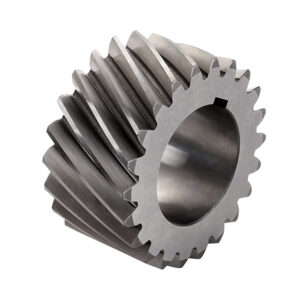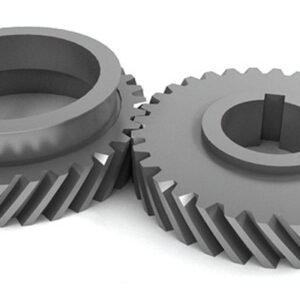Description
Plastic Helical Gear
Features of Helical Gears:
Plastic helical gears, having their teeth cut at an angle, are widely used. The meshing between a helical gear and a worm is smoother and quieter than spur gears since the teeth on helical gears are specially cut at an angle, so when two teeth on the gear system engage, it starts a contact on one end of the tooth, which gradually spreads with the gear rotation, until the time when both the tooth are fully engaged.
Helical Gears Specifications:
| Type | Helical Gear |
|---|---|
| Module | M0.1 – M2.0 |
| Material | Polyacetal (POM) / Nylon |
| Bore | Ø1.40mm/ Ø1.90mm/ Ø2.05mm/ Ø2.40mm/ Ø2.55mm / Ø2.90mm/ Ø3.05mm (Flexible) |
| Outer Diameter | Ø10.0mm – Ø50.0mm (Flexible) |
| Face Width (L) | 2.0mm – 10.0mm (Flexible) |
Inquiry: Please provide gear specifications.
MINGHUA provides handmade/ machined custom gears, so tests of gears can be done before mold making.
Our plastic gears meet all kinds of needs for laser printers, digital cameras, scanners, CD-ROMs, stepping motors, medical equipment, vending machines, gear pumps, household appliances, fax machines, watches, toys, etc, and other specialized products.
- Specification
Item D-Hole Helical Gear Material POM Module M0.6 No. of Teeth 16T Weight 0.95g / pcs Application Applies in any products with transmission design.
- Specification
Item Gear Material ODM Module ODM No. of Teeth ODM Weight ODM Application IP Camera, monitor, etc.
About Plastic Gears
A gear is a toothed wheel designed to transmit force to another equipment or toothed component. The teeth of a gear can be shaped to minimize wear, vibration, and noise and maximize power transmission efficiency.
Gears of differing sizes are often used in pairs for a mechanical advantage, allowing the torque of the driving gear to produce an enormous torque in the driven gear at a lower speed or a smaller torque at a higher rate.
The Advantages of Plastic Gars:
- Plastic gears are easily molded into various shapes, giving them a more comprehensive range of configurations.
- Plastic gears are less expensive and are lighter in weight.
- Plastic gears are chemical and corrosion-resistant.
- Plastic gears have a quieter and smoother operation and offer more efficient drive geometry.
- Plastic gears are inherent self-lubricating.
While plastic gears offer these many advantages over metal gears, their practical use requires proper design and engineering to account for possible dimensional and property variations over the expected range of operating conditions.




